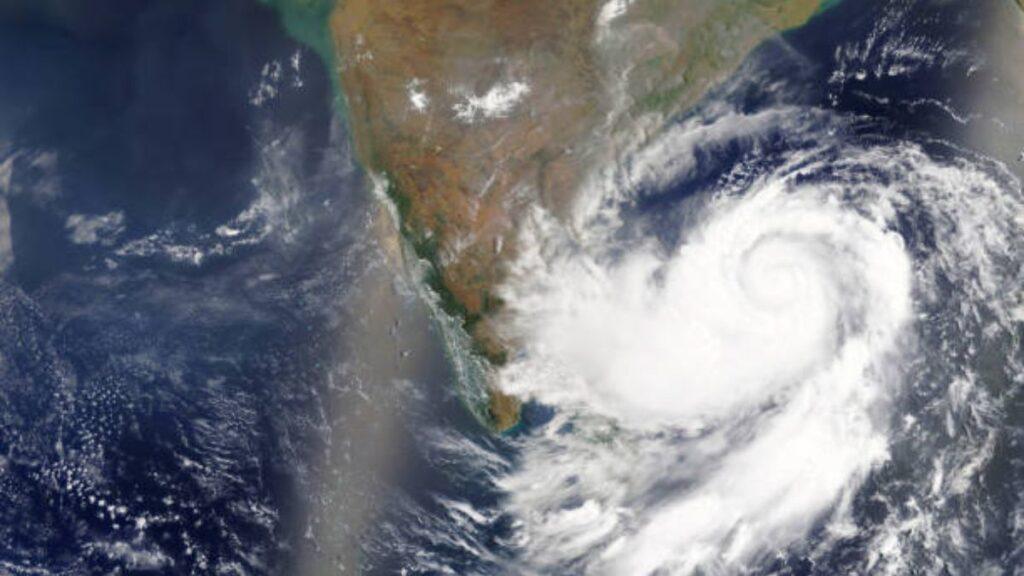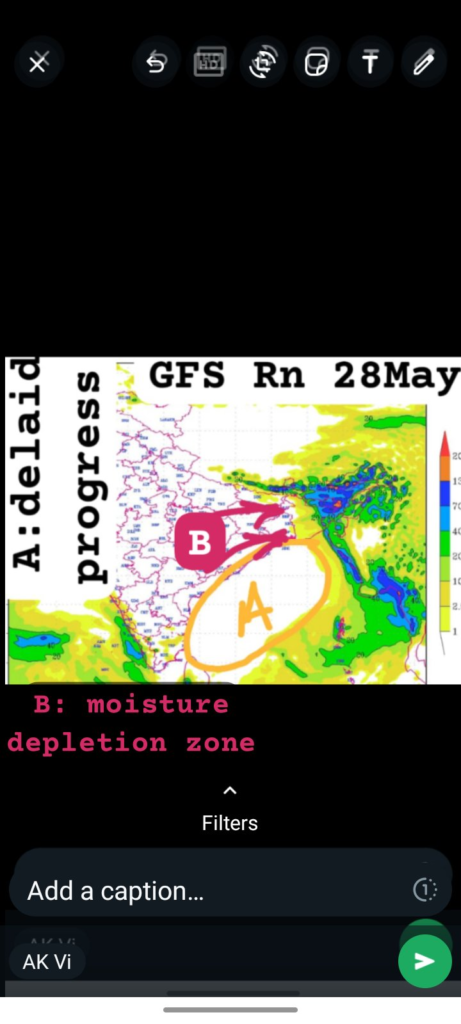Will Cyclone Remal impact the progress and onset of Monsoon?

Get expert insights into the impact of Cyclone Remal on the onset and progress of monsoon.
Cyclone Remal, severe cyclonic storm in Bay of Bengal, currently positioned 360 kilometers south-southeast of Khepupara and 350 kilometers south-southeast of Sagar, will cross the region between Sagar and Khepupara by midnight on May 26.
The Impact of Cyclone Remal on Monsoon is expected to significantly influence both the onset and the progress of the monsoon season in several areas, according to Anupam Kashyapi, former head of weather forecasting division, IMD Pune.

Delay in Monsoon Progress
In addition to the delayed monsoon progress, the Impact of Cyclone Remal on Monsoon also includes significant moisture depletion in region ‘B’. This reduction in atmospheric moisture is expected to have a cascading effect, leading to a rise in temperatures.
- The depletion of moisture hampers the formation of rain-bearing clouds.
- As a result, temperatures are likely to increase due to the lack of rainfall and persistent high-pressure systems.

Regional Implications
The Impact of Cyclone Remal on Monsoon is not confined to a single region but has broader implications across the affected areas. The delay in the monsoon and the associated rise in temperatures could have several consequences:
- Agriculture: Farmers relying on timely monsoon rains for sowing crops might face challenges, potentially affecting crop yields.
- Water Resources: A delay in monsoon rains could strain water resources, exacerbating water scarcity issues in some regions.
- Public Health: Increased temperatures and delayed rains could also impact public health, particularly in terms of heat-related illnesses.
As Cyclone Remal continues its path towards the Indian coastline, its impact on the monsoon remains a crucial area of concern. The delayed monsoon progress, moisture depletion, and subsequent rise in temperatures highlight the intricate relationship between cyclonic activities and seasonal weather patterns. Monitoring these developments closely will be essential for mitigating the adverse effects on agriculture, water resources, and public health.
The Impact of Cyclone Remal on Monsoon underscores the need for robust meteorological forecasting and proactive measures to address the challenges posed by such natural phenomena.









